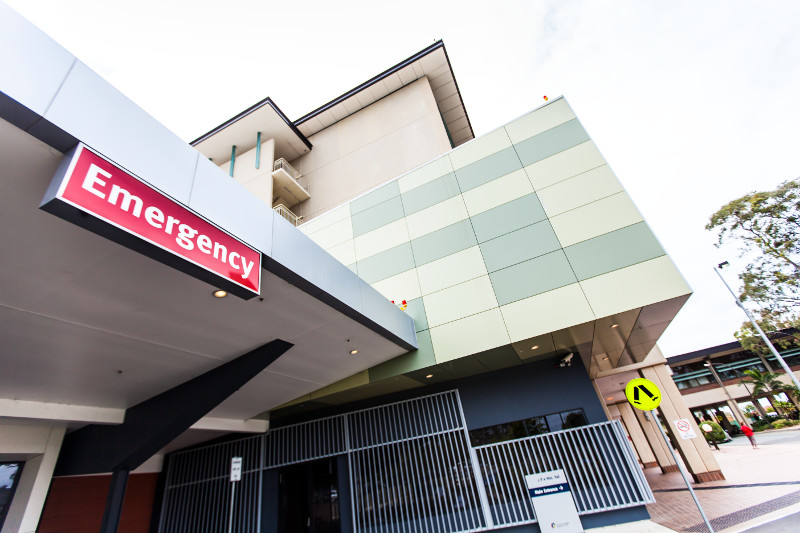Nowhere is the ability to communicate clearly and effectively more important than in medical settings. This extends beyond the obvious stakeholders such as EMS professionals and dispatchers. Everyone from food service, to hospital pharmacy employees, administrators, housekeeping, engineering, security and maintenance benefits from the ability to communicate one-to-one, one-to-many in the form of talk groups, and, in extreme circumstances, all call. The priority is to maximize response times, whether its for the purposes of handling to a security incident, improving patient safety (e.g., attending to a patient fall) or just generally improving facility efficiency and guest satisfaction.
The ease and convenience of two-way radio has made it especially viable for communications in health care settings. These devices are rugged and lightweight, have excellent battery life, deliver crystal clear audio, and are highly reliable. MOTOTRBO two-way radios allow for data applications such as texting and job ticketing. On the whole, two-way PTT is a practical, high-performance communication solution for hospitals, medical centers, nursing homes and other health care facilities.

How WAVE PoC Enhances Traditional Two-Way Radio
In recent years, Push to Talk over Cellular (PoC) has emerged as a possible alternative to radio. Benefits such as quick deployment, mobility and no additional on-site infrastructure to manage are fairly self-evident. However, radio and PoC each have their unique strengths and weaknesses.
The traditional two-way radio is exceptionally resilient to downtime. The radio network is not reliant on external infrastructures such as cellular towers or third parties like mobile carriers since the underlying technology physically exists within the facility or campus. This makes it especially well-suited to critical communication among medical staff, security personnel and administrative teams that help keep hospitals functioning even in dire straits.
However, two-way radio is not without its Achilles’ heel: range. Spread-out hospital campuses and multi-campus medical centers can communicate internally with a reliable radio network, but they cannot use PTT once out of range. The sprawl of healthcare facilities makes it difficult for radio managers to plan and provide coverage when facility growth is so rapid. This makes PTT communication across large campuses, or between different sites, a challenge.
Enter the Motorola TLK 100, Motorola’s answer to PoC. Think of it less as a cellular device that does PTT, but as a two-way radio with nationwide range. The Motorola TLK 100 is a simple, distraction-free PTT device that works beyond the range of a traditional radio system by operating on a nationwide 4G network. This means that they’re dependent on an external service; however, it also gives staff who need the extended coverage such as maintenance teams, security staff and administrative managers who travel frequently between campuses the ability to stay connected to their talk groups at all times. There is also the ability to interoperate with existing (compatible) radio users through the WAVE on Cloud platform.
Creating a Unified Communication Network
The ideal health care communication network combines the best aspects of radio (resilience and control) and PoC (mobility) in a single, integrated system. As we’ve mentioned in previous blog posts, WAVE from Motorola Solutions creates a unified network using multiple end-user devices. This includes traditional MOTOTRBO two-way radio, but also digital devices such as TLK 100. This means talk groups can communicate across disparate networks. Staff members that leave the range of the facility with some regularity can maintain contact with personnel who primarily use radio rather than cellular for PTT.
Taken one step further, the Motorola WAVE OnCloud application for smart devices can basically turn any internet-connected endpoint into a PTT, two-way radio. For example, a remote hospital manager can use his or her smartphone to remotely radio an on-site administrative supervisor to get updates on an unfolding security incident.
This type of unified communication network is particularly important in emergency situations that might involve multi-campus coordination. For example, during Hurricane Harvey’s berth over Houston, certain University of Texas Medical Branch (UTMB) facilities were completely surrounded by flooding, meaning supplies and resources had to be transported by boat. In these types of dire situations, cellular PTT can act as a godsend for coordination between sites. Elsewhere in the area, cellular communication was disrupted by damaged cell towers, which underscores the importance of radio frequency-based PTT for mission-critical communications within a medical facility.
The bottom line: Whether facing adversity stemming from inclement weather, security breaches and patient-staff altercations, or just streamlining the coordination of everyday tasks, rugged, reliable and highly mobile PTT communication is critical for health care facilities.
To learn more about the logistics of creating an integrated PTT network for healthcare, contact the experts at Day Wireless Systems today.